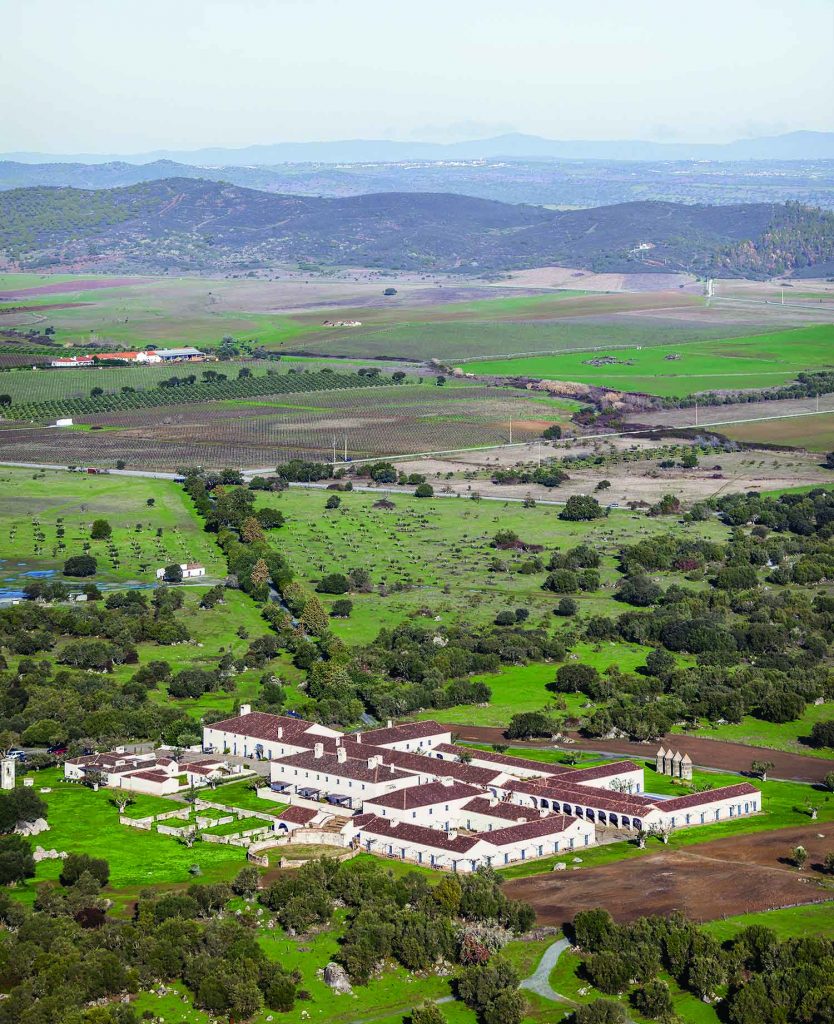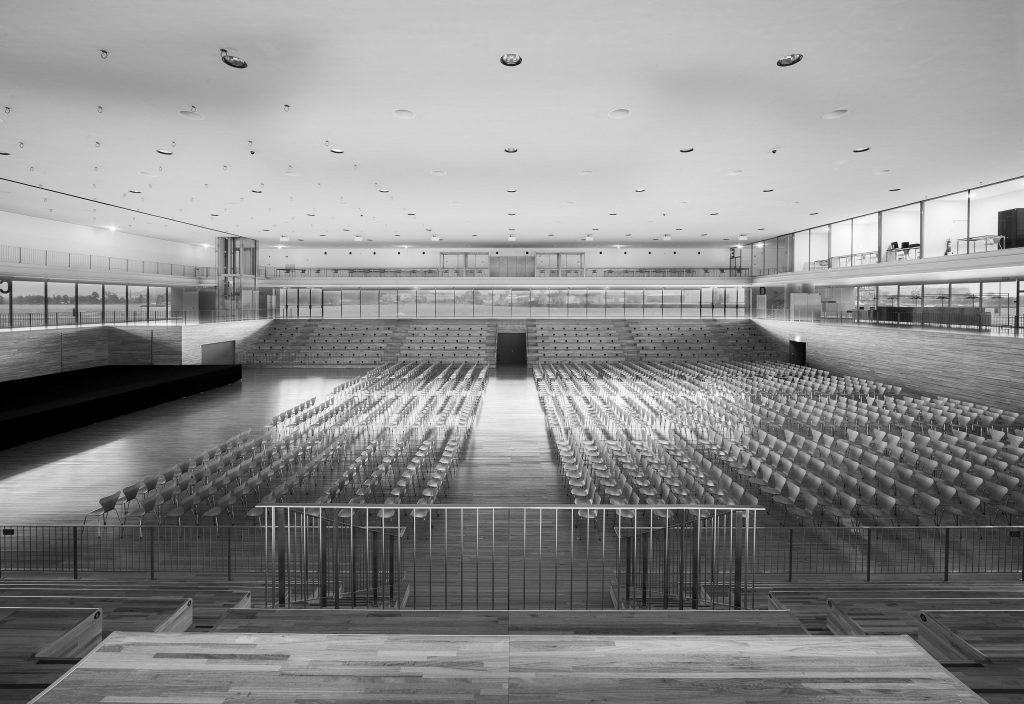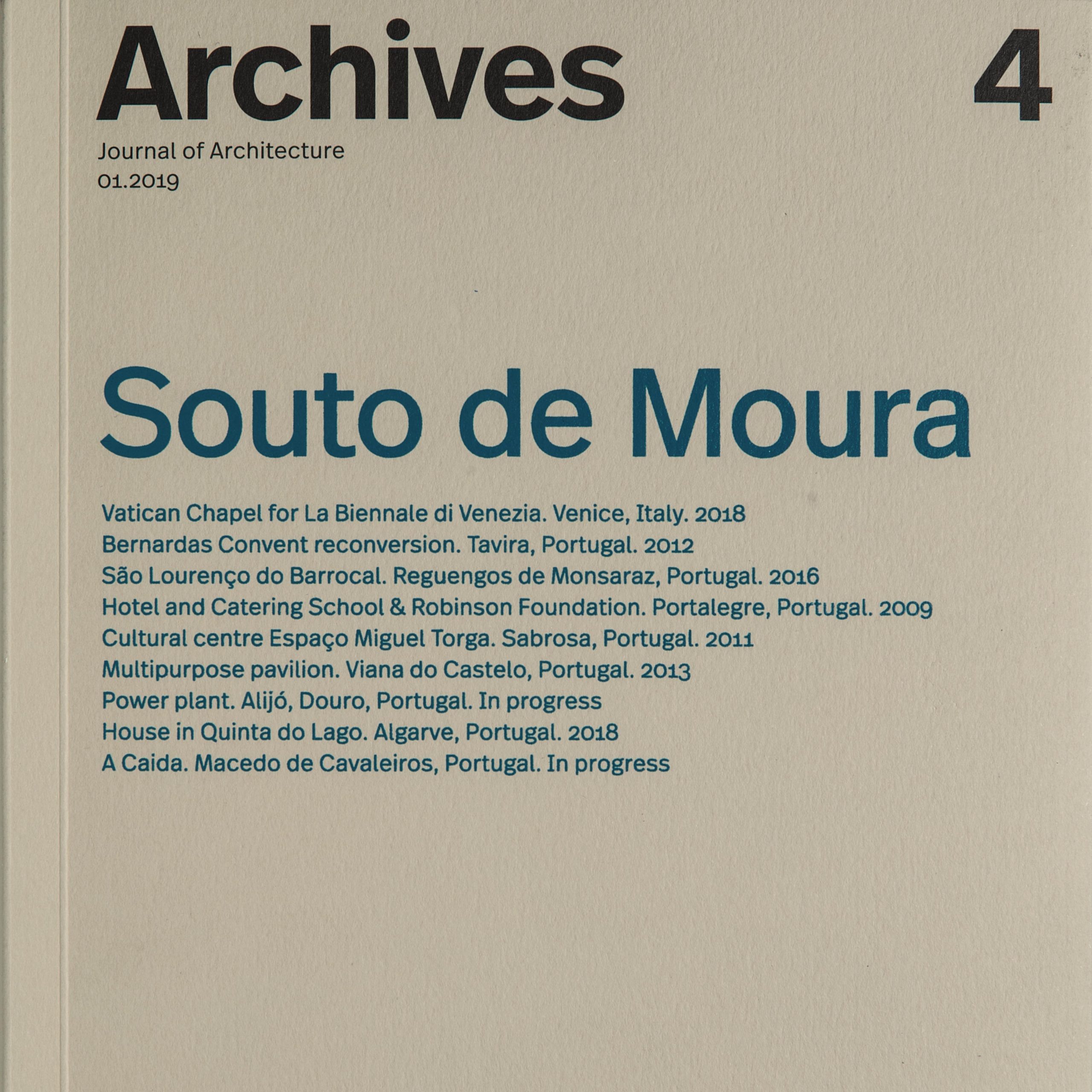***
Title: Archives 4 | Souto de Moura
Author: Carlos Quintans, Juan Rodríguez
Editorial: Archives Journal of Architecture. ISBN: 978-84-947678-5-2
Language: English & Spanish
327 pages
***
“His architecture is a constant advance and review that is punctuated in with exceptional moments.
“Su arquitectura es un constante avanzar y revisar que se puntea con momentos excepcionales.
(…)
A search for what’s next and what’s universal, with that idea of critical internationalism as Jean-Louis Cohen puts it. When Souto carried out the Braga market project and the intervention in a small ruin in Gêres(1980)he was already aware that it was not possible to find a pure culture or language than a transitional stage was taking place.
Estamos ante la búsqueda en lo próximo y en lo universal, con esa idea de internacionalismo crítico tal y como la expone Jean-Louis Cohen. Cuando Souto realiza el proyecto del mercado de Braga y la intervención en una pequeña ruina en Gêres(1980), ya es consciente de que no era posible encontrar una cultura o un lenguaje puros, de que se estaba viviendo una etapa de transición. ”
Archives 4 | Souto de Moura (c) 2019, published by C2C Proyectos editoriales de arquitectura S.L.


Vatican Chapel | Capilla del Vaticano
A large, unpolished and scratched Vicenza slab stands perpendicular to the ground, and it is assembled through a small offset on a similar stone slab. One, two, three, four… the same constructive detail is repeated seven times until we arrive at an opening in the wall that shows us the access to the chapel. A large and thick slab rests onto these stones, and a sculptural gutter protrudes from it. A tree breaks the evidence of the entrance view. Engraved on a plate that seems apparently abandoned on the floor we can read MMXVIII, 2018. It is not an ancient ruin, it does not pretend to be. It is a contemporary project, an artificial ruin with the aspiration of permanence, an attempt to overcome a location over time. Black and White photos, dark, without people emphasize the timeless of the pavilion, the feeling that the stones were always in the same place, in the same position for a long time.
Un gran sillar de piedra de Vicenza, sin pulir y con impurezas, se erige perpendicular al terreno, ensamblado a través de un breve desfase sobre una piedra de similar tamaño. Uno, dos, tres, cuatro… El mismo detalle constructivo se repite siete veces hasta llegar a una apertura en el muro que nos indica el acceso a la capilla. Sobre estas piedras se apoya una gran losa de donde sobresale un canalón macizo. Un árbol situado junto a la entrada rompe la evidencia del acceso. En el suelo se puede leer grabado sobre una losa de piedra aparentemente abandonada: MMXVIII, 2018. No es una ruina centenaria, no pretende serlo. Es un proyecto actual, una ruina artificial con aspiración de permanencia, de superar una localización en el tiempo. Las fotografías en blanco y negro, oscuras, sin gente enfatizan esa atemporalidad, esa sensación de que las piedras estuvieron en ese mismo lugar, en esa misma posición, durante mucho tiempo.
Let’s repeat the operation again.
Repitamos la operación una segunda vez.

São Lourenço do Barrocal | São Lourenço do Barrocal
The photo shows us a set of buildings that are placed around both sides of a central street as if it was a small village in a rural context. The whiteness of the walls the chimneys with different heights that perforate the red roof tiles emphasizes the volumes. We approach the project through the following images and find out that the complex has been recently restored without altering its original form or materiality. The windows are beautiful from the outside with its abstract shape, and, from the inside with a simple mold that creates a warmth material to the interior space. The depiction of the architect is not hidden in this project, it just does not exist. It is impossible to recognize and, maybe, that is the reason the architects reaches all the spaces. The respect of Souto de Moura to the existent architecture is in every single detail of the project, in every constructive detail. His attempts to not transform the character remains in all the phases of the project. The existent ruin is only recovered to adapt it to a new use. The architect clearly attempting to find timeless. In this case, the photos are with color, saturated to celebrate the rebirth of an architecture that apparently no longer existed.
La fotografía nos muestra un conjunto de edificios organizados a ambos lados de una calle central, a modo de pequeña aldea en un entorno rural. Destaca la blancura de los muros y las chimeneas de distintos tamaños que perforan las cubiertas de teja rojiza. Nos acercamos a él a través de las sucesivas fotografías para observar que el complejo ha sido recientemente restaurado, sin alterar en modo alguno su apariencia original. Las ventanas, desde dentro y desde fuera muestran una belleza exquisita, con su abstracción al exterior y las contraventanas de madera con una sencilla moldura que dan calidez al espacio interno. La mano del arquitecto no se oculta en este proyecto sino que deja de existir. Es irreconocible, y quizás por eso, llega a todos los lugares. El respeto de Souto de Moura a la arquitectura existente está en cada esquina del proyecto, en cada detalle constructivo. Su intención por no alterar ni transformar su carácter se mantiene inquebrantable en todas las fases del proyecto. La ruina existente únicamente se recupera para adaptarla a un nuevo uso. La aspiración del arquitecto es claramente la búsqueda de la atemporalidad. En este caso, las fotografías son en color, saturadas, para celebrar el renacimiento de un arquitectura que se suponía caducada.
Let’s make this operation one more time.
Realicemos este ejercicio una última vez.

Multipurpose Pavilion | Pabellón Multiusos
Here the photograph is entirely different. A large black beam supports two ducts painted with the same color that presumably hide MEP equipment. A woman walking away shows us the enormous disproportionate scale. In the background, there is an old ship stranded that connects its size with the building. The image is shown in a dark, black and white photography, and show a dramatic landscape. If we move around the building with the following pictures, all the mechanical equipment are roughly shown in the facade. Nonetheless, there is a compositive order of stable relations with the architectural space. We find an architecture that challenges the typology industrial building. When we access to the interior, the materiality of the project is clearly high-tech: shiny and transparent surfaces cover interior facades, elevators, and handrails and create a continuous set of reflections. In this project of Souto de Moura, everything seems precise, efficient and necessary. The sense of time is inexistent. There is not even nostalgia to a past mechanical or futurist architecture. The building is again a timeless machine.
Aquí la imagen es completamente distinta. Una gran viga negra sostiene dos tubos de tamaño similar y mismo color, presumiblemente de instalaciones. Una mujer alejándose nos muestra una escala descomunal, desproporcionada. Al fondo, un antiguo buque varado, se relaciona con la escala del edificio. Todo ello se muestra en una fotografía en blanco y negro, oscurecida, mostrando un paisaje dramático. Si nos movemos alrededor del edificio a través de las sucesivas imágenes, todos los sistemas mecánicos se muestran de un modo crudo pero con un orden compositivo claro de relaciones estables frente al espacio arquitectónico. Vemos una arquitectura que desafía la noción de edificio industrial. Al entrar en su interior, la materialidad del proyecto es claramente high-tech: superficies brillantes y transparentes cubren fachadas interiores, ascensores y barandillas generando un continuo juego de reflejos. En este proyecto de Souto de Moura, todo se muestra preciso, eficiente y necesario. No existe el paso del tiempo. Ni siquiera se vislumbra una nostalgia a un tipo de arquitectura futurista o mecanicista del pasado. El edificio es una máquina atemporal.
We have found some hints to understand the architect.
Aquí encontramos alguna de las pistas para entender al arquitecto.

Carlos Quintans y Juan Rodríguez attempt in the Magazine Archives 4 | Souto de Moura to introduces in the complexity of the architect and its multiples aspects and use as a starting point the particularities of his work. Quintans writes a brilliant introductory essay where he avoids to offer a simplistic view of Souto de Moura Work. Instead, he subtly reels off for us the interests of the architect and its evolutions. From the particularities of his work, we gently understand his own hermeneutics without giving us a final definition of his architecture since it probably does not exist.
Carlos Quintans y Juan Rodríguez tratan en la revista Archives 4 | Souto de Moura de adentrarnos en la complejidad del arquitecto y sus múltiples vertientes utilizando como punto de partida las particularidades de su obra. De forma inteligente, Quintans en su texto introductorio evita ofrecernos una visión simplificada del modo de trabajo de Souto de Moura. Sutilmente va desgranando una tras otra los intereses del arquitecto y la evolución cronológica de los mismos. Desde las particularidades de su obra nos acerca de forma serena y pausada a su propia hermenéutica sin llegar a una definición depurada ya que seguramente no exista.

The construction of the artificial ruin, the embellishment of the existing ruin or the timeless machine, are just some of the recurring themes that Souto de Moura’s architecture explores. Archives magazine includes these and many other fields with a bold but intelligent selection of the last work of the architect. Archives offers two types of readings: first, we can go individually through the selected projects and enjoy the quality of its architecture. Moreover, we can deeply analyze the Souto de Moura approach to architecture through Quintans essay and the brilliant text by Santiago de Molina where they introduce us the hints to connect with the infinite collage of concepts of this enigmatic architect.
La construcción de la ruina artificial, el embellecimiento de la ruina existente o la máquina atemporal son solo algunos de los campos de trabajo que la arquitectura de Souto de Moura explora. La Revista Archives abarca estos y muchos otros temas con una selección de proyectos valiente y arriesgada de las últimas obras del arquitecto. Archives ofrece una lectura a dos velocidades del volumen: por un lado podemos adentrarnos en los proyectos seleccionados de manera individual y disfrutar de su calidad arquitectónica. Por otro, desengranar el modo de trabajar de Souto de Moura mediante el propio texto de Quintans y el esplendido texto de Santiago de Molina que nos presentan las claves para conectar el infinito collage de conceptos de este enigmático arquitecto.
Cover Photo by Archives 4 | Souto de Moura (c) 2019, published by C2C Proyectos editoriales de arquitectura S.L. Reprinted with permission of the publisher.
